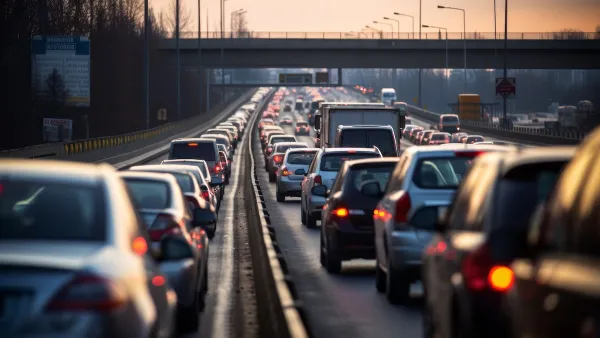Following recent bad news about the sluggish growth of the country's gross domestic product (GDP), the Brooking Institution reminds policy makers that growth does not necessarily trickle down to economic well-being.
Alan Berube follows on recent news about the sluggish national economy with data that focuses more on the economic well-being of metropolitan areas, while also producing some larger conclusions about the connections between economic growth and economic well-being.
First came the news from the U.S. Commerce Department "that GDP growth slowed to an annual rate of 0.7 percent in the fourth quarter of 2015, stoking fears about whether the ongoing recovery from the Great Recession can sustain momentum in the face of global economic instability."
Berube, however, reminds readers of the Brooking Institution's Metro Monitor tool, which allows additional insight into the economic health of the country. According to Berube, the Metro Monitor shows that 95 of the 100 largest metro areas showed increases in growth categories. "Yet growth in metro economies did not reliably improve all residents’ economic fortunes," states Berube.
To make that point Berube shares a chart laying out growth rankings and inclusion rankings, showing a weak relationship between the two categories. From that exercise, Berube produces the following findings:
Many metro areas that had high growth performed worse than their peers on inclusion, and vice versa (the upper left and lower right-hand quadrants). Nashville’s economy grew at a rapid rate from 2009 to 2014, ranking fifth among metro areas, but median wages fell and relative poverty rose. In Springfield, Mass., however, relative poverty dropped significantly, ranking the metro area second for inclusion, despite anemic overall growth that ranked the metro area 64th among the 100 largest.
The article concludes with an appeal to policy leaders to keep in mind all the measures of economic opportunity—not just the obvious—when evaluating the performance of the economy.
FULL STORY: In metro areas, growth isn't reliably trickling down

Planetizen Federal Action Tracker
A weekly monitor of how Trump’s orders and actions are impacting planners and planning in America.

Map: Where Senate Republicans Want to Sell Your Public Lands
For public land advocates, the Senate Republicans’ proposal to sell millions of acres of public land in the West is “the biggest fight of their careers.”

Restaurant Patios Were a Pandemic Win — Why Were They so Hard to Keep?
Social distancing requirements and changes in travel patterns prompted cities to pilot new uses for street and sidewalk space. Then it got complicated.

Platform Pilsner: Vancouver Transit Agency Releases... a Beer?
TransLink will receive a portion of every sale of the four-pack.

Toronto Weighs Cheaper Transit, Parking Hikes for Major Events
Special event rates would take effect during large festivals, sports games and concerts to ‘discourage driving, manage congestion and free up space for transit.”

Berlin to Consider Car-Free Zone Larger Than Manhattan
The area bound by the 22-mile Ringbahn would still allow 12 uses of a private automobile per year per person, and several other exemptions.
Urban Design for Planners 1: Software Tools
This six-course series explores essential urban design concepts using open source software and equips planners with the tools they need to participate fully in the urban design process.
Planning for Universal Design
Learn the tools for implementing Universal Design in planning regulations.
Heyer Gruel & Associates PA
JM Goldson LLC
Custer County Colorado
City of Camden Redevelopment Agency
City of Astoria
Transportation Research & Education Center (TREC) at Portland State University
Camden Redevelopment Agency
City of Claremont
Municipality of Princeton (NJ)



























